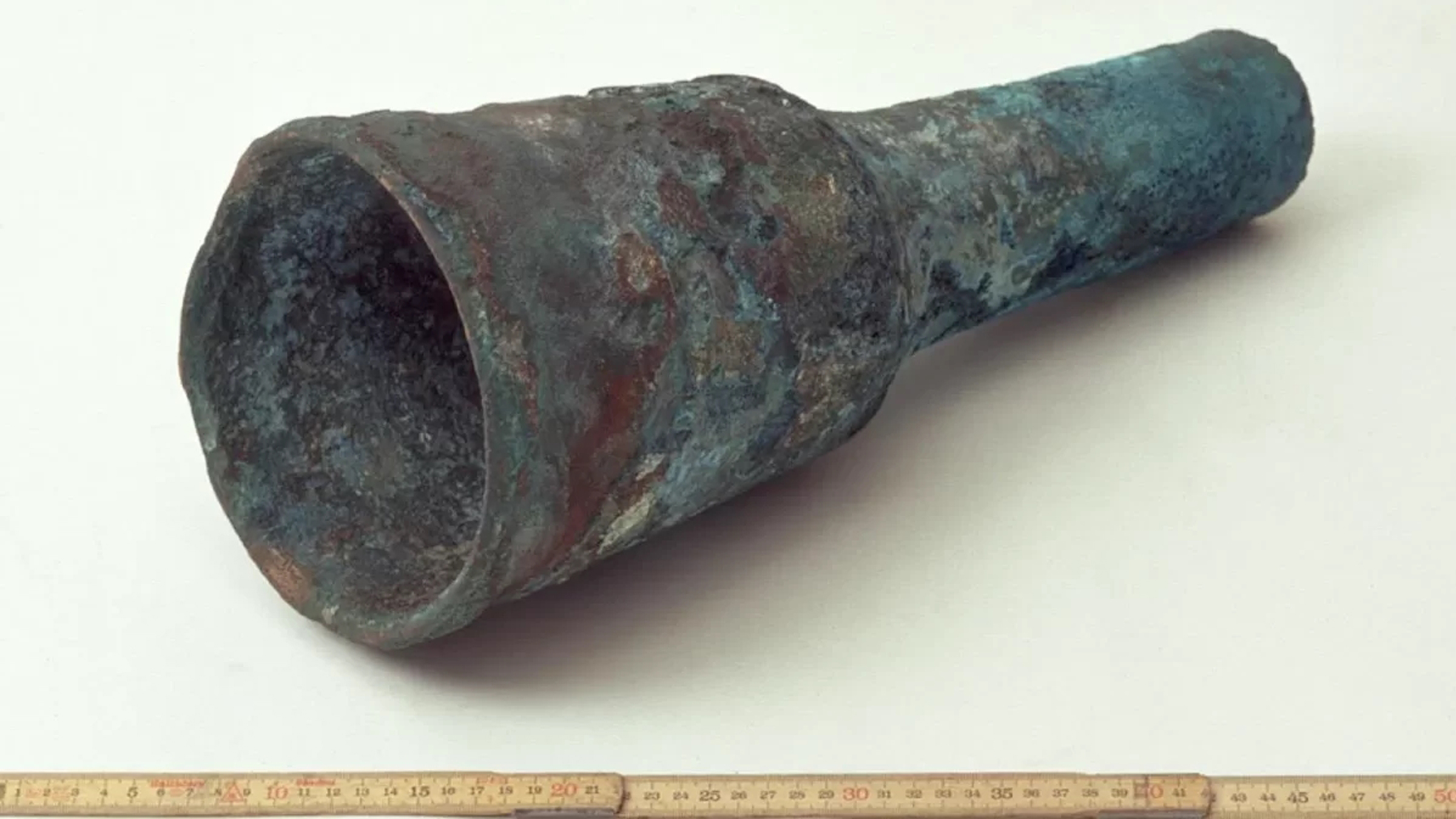14th-century shipboard cannon that fired 'stone shots' may be Europe's oldest on record
An analysis of cloth found inside the cannon suggests that it dates to the 14th century and that the weapon was charged with gunpowder and ready to fire.

An unusual cannon found underwater off the coast of Sweden in 2001 may be the oldest shipboard gun ever discovered in Europe, a new study finds.
Pieces of cloth found inside the object — thought to be the remains of a bag for gunpowder known as a cartouche — have been radiocarbon-dated to the 14th century, making the cannon one of the earliest of its kind and possibly the oldest shipboard cannon in Europe on record.
The analysis also revealed that the weapon was charged and ready for use, meaning it wasn't just being transported for use on land.
Rather than shooting metal cannonballs, the early cannon was designed to fire balls of rock against attackers, said study lead author Staffan von Arbin, a doctoral student in maritime archaeology at the University of Gothenburg in Sweden.
"This type of early cannon most definitely fired stone shots," von Arbin told Live Science in an email. "The intention was not to sink an enemy vessel. These guns were 'anti-personnel' weapons — they were simply used to 'clear the deck' of an enemy vessel."
The authors of the study, published Aug. 3 in the journal The Mariner's Mirror, don't know if the early cannon was fitted to a merchant vessel or a warship, but they hope to solve the mystery by exploring the underwater location where it was discovered.
Related: 30 incredible sunken wrecks from WWI and WWII
Get the world’s most fascinating discoveries delivered straight to your inbox.
Early cannon
The cannon was found at a depth of about 60 feet (20 meters) and about 3 miles (5 kilometers) southwest of the island of Marstrand on Sweden's west coast.
The archaeologists suggest that the cannon came from a ship that had foundered at the location, possibly after hitting the skerry — a low rock — of Kleningen, which is a few hundred feet to the south. But they also acknowledged that it could have been accidentally dropped or thrown overboard from a ship in distress.
The cannon is almost 19 inches (47.5 centimeters) long and roughly funnel-shaped, with a narrow powder chamber at the back and a wide barrel measuring more than 7 inches (18.5 cm) across at the front. Other cannons of this type were fitted with a wooden gun carriage so they could be aimed.
Von Arbin said such funnel-shaped cannons were the first type used in Europe after the technology was introduced there in the 13th century, probably via the Middle East. The exact reason for the distinctive shape is not known, but it may have had something to do with the way they were loaded.
Copper alloy
The researchers also examined the cannon's metal body with inductively coupled plasma mass spectrometry (ICP-MS), a technique that ionizes a tiny sample of a substance with a high-temperature plasma and analyzes the resulting gas.
They were expecting the cannon to be made of gunmetal, which is a bronze made from copper and tin with significant amounts of zinc and nickel to make it more durable. Instead, they found that it was made of a copper alloy with relatively small amounts of tin and high amounts of lead, which would have made it relatively brittle.
The researchers noted this alloy was unsuitable for gun-making, and they suspect it was used because better alloys were not known at that time.
Von Arbin noted that the Baltic was heavily trafficked by trading ships in the 14th century and that merchant vessels were often armed against pirates and the ships of enemy nations.
The location where the cannon was found is very exposed, and any shipwreck there is probably broken up, he said. However, he hopes that an analysis of the seafloor could find some remains of the cannon and that more dates and the origins of the ship could be revealed by dendrochronology, a technique that examines tree growth rings in wood to determine when and where it grew.
Tom Metcalfe is a freelance journalist and regular Live Science contributor who is based in London in the United Kingdom. Tom writes mainly about science, space, archaeology, the Earth and the oceans. He has also written for the BBC, NBC News, National Geographic, Scientific American, Air & Space, and many others.



